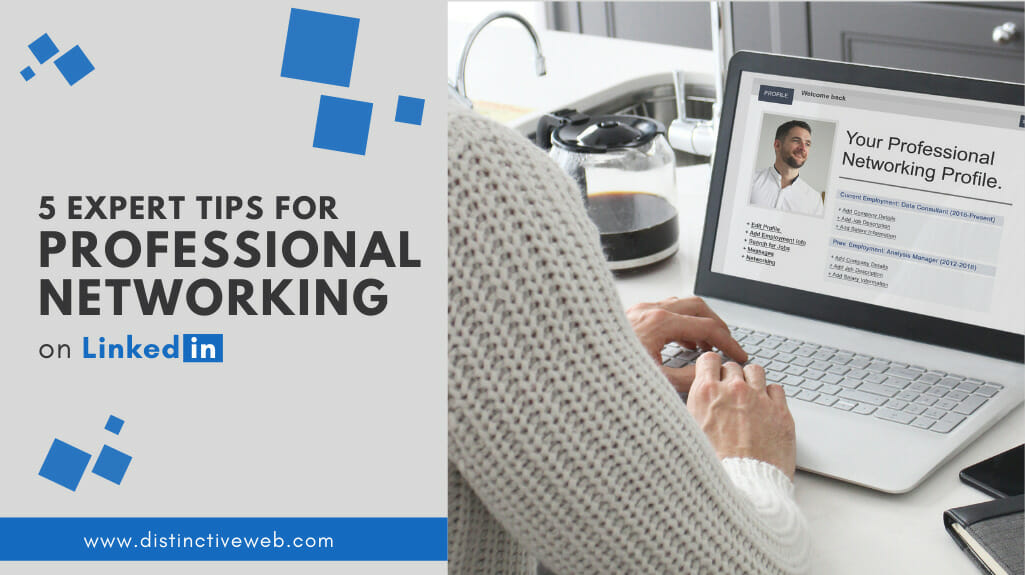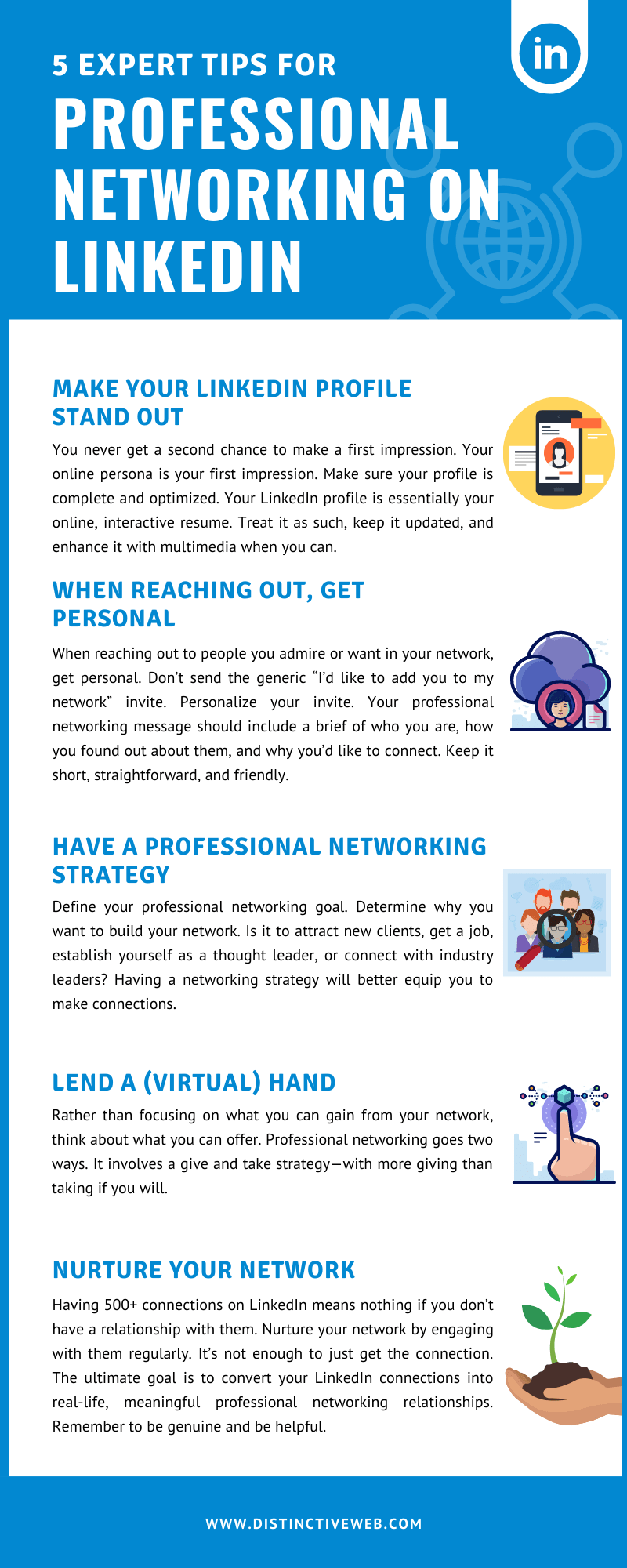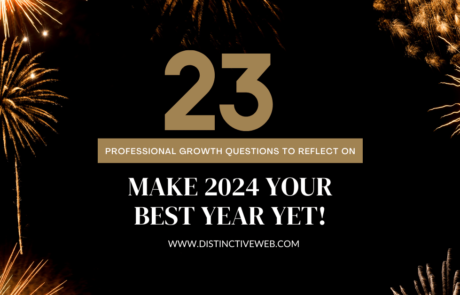
Professional networking online has its unique set of challenges. Generally, it’s relatively harder to build personal connections when you don’t have the advantage of face to face meetings. However, LinkedIn offers some golden opportunities to help you create a network that can propel your career to great heights.
Successful professional networking is all about building meaningful relationships. But, how do you turn a stranger into a reliable member of your network?
Here’s how to effectively network on LinkedIn.
1. Make Your LinkedIn Profile Stand Out
You never get a second chance to make a first impression. Your online persona is your first impression.
Before you start networking, ensure your profile is filled out and optimized. Your LinkedIn profile is essentially your online resume, but with the opportunity to enhance it with multimedia. It’s a powerful part of your online personal brand.
Here are some time-proven tips to optimize your LinkedIn profile.
- Use a professional headshot
- Create a disruptive headline to stand out from the crowd. How would you introduce yourself to someone? Make sure to describe what you do and what makes you different. Keep it brief; keep it sweet. The goal here is to grab peoples’ attention and generate interest.
- Don’t ignore the summary section. Use this section to tell a compelling story of who you are and what you have to offer. Prove that you’re worth connecting with.
You’re more experienced than you think. Especially if you are an early-career professional or career changer, don’t omit the summer jobs, unpaid internships, or volunteer work from your profile. You never know the details that might catch someone’s eye.
Once your profile is in stellar condition, it’s time to build your network and nurture meaningful relationships.
2. When Reaching Out, Get Personal
When reaching out to people you admire or want in your network, get personal. Don’t send the generic “I’d like to add you to my network” invite. Personalize your invite. Your professional networking message should include a brief of who you are, how you found out about them, and why you’d like to connect. Keep it short, straightforward, and friendly.
Do a little digging and find out more about them. It’s best to find some common career ground. Have you met before? If so, mention this.
While on the subject of reaching out, it’s worth mentioning some of the things you shouldn’t do. Don’t spam. Avoid the “Can I have a job?” message. Don’t request a recommendation or an endorsement from someone you don’t know. Finally, don’t ask for too much too soon from new connections.
3. Have a Professional Networking Strategy
Define your professional networking goal. Determine why you want to build your network. Is it to attract new clients, get a job, establish yourself as a thought leader, or connect with industry leaders?
Having a networking strategy will better equip you to make connections. You’ll know who you want to connect with and why.
Also, join your network’s “In” crowd. LinkedIn groups are an excellent way to get noticed and make connections. For this to be an effective strategy, you need to interact. Do this by participating in discussions, posting relevant content, and answering questions. Remember, LinkedIn groups are a community of like-minded professionals. Focus on being a valuable member.
4. Lend a (Virtual) Hand
Rather than focusing on what you can gain from your network, think about what you can offer. Professional networking goes two ways. It involves a give and take strategy—with more giving than taking if you will.
As you grow your network, think about how you can be of value. How can you be of service? Everyone has something to offer. You could mentor, offer advice, or give a tutorial on something you’re skilled in. Sometimes being helpful is as simple as connecting two people you think should know each other.
On LinkedIn, people are always looking to learn. You can be of service by posting engaging, meaningful content. Publish an article and showcase your skills. LinkedIn is a great place to share any professional lessons you’ve learned over the years and offer some thought leadership.
Your content is your voice and can potentially expand your audience.
5. Nurture Your Network
Having 500+ connections on LinkedIn means nothing if you don’t have a relationship with them. It would be best if you nurture your network by engaging with them regularly. Here’s how to do this:
- Update your status often and regularly. What are you reading? What are you working on? The key is to stay on your network’s radar.
- Like, comment, and share posts that you find interesting or valuable.
- Share relevant, valuable content you find on other sights. Be sure to add why you find this content useful.
Professional Networking In Sum
In relationships, it’s much better to give than receive. It’s not enough to just get the connection. The ultimate goal is to convert your LinkedIn connections into real-life, meaningful professional networking relationships. Set up calls or request for a meeting. Follow-up is the key to success. Support your online contacts with some human touch.
Remember to be genuine and be helpful.

Originally published on this blog August 10, 2013, this article has been updated and republished with LinkedIn networking information that is relevant for 2021 and beyond.









